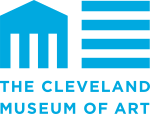Cleveland Museum of Natural History

The Cleveland Museum of Natural History is a natural history museum located approximately five miles (8 km) east of downtown Cleveland, Ohio in University Circle, a 550-acre (220 ha) concentration of educational, cultural and medical institutions. The museum was established in 1920 by Cyrus S. Eaton to perform research, education and development of collections in the fields of anthropology, archaeology, astronomy, botany, geology, paleontology, wildlife biology, and zoology. The museum traces its roots to the Ark, formed in 1836 on Cleveland's Public Square by William Case, the Academy of Natural Science formed by William Case and Jared Potter Kirtland, and the Kirtland Society of Natural History, founded in 1869 and reinvigorated in 1922 by the trustees of the Cleveland Museum of Natural History.Donald Johanson was the curator of the museum when he discovered "Lucy," the skeletal remains of the ancient hominid Australopithecus afarensis. The current Curator and Head of the Physical Anthropology Department is Yohannes Haile-Selassie. The museum has embarked on a multi-year, $150 million renovation and expansion project. DLR Group was selected to design the project in June 2019, and the museum broke ground on its new visitor hall, lobby and exhibit wing in June 2021. A new entrance and other upgrades opened in December 2022. The project is scheduled to be completed in December 2024, two years ahead of the original schedule.
Excerpt from the Wikipedia article Cleveland Museum of Natural History (License: CC BY-SA 3.0, Authors, Images).Cleveland Museum of Natural History
Wade Oval Drive, Cleveland
Geographical coordinates (GPS) Address Website External links Nearby Places Show on map
Geographical coordinates (GPS)
| Latitude | Longitude |
|---|---|
| N 41.511555555556 ° | E -81.613083333333 ° |
Address
Cleveland Museum of Natural History
Wade Oval Drive 1
44106 Cleveland
Ohio, United States
Open on Google Maps






